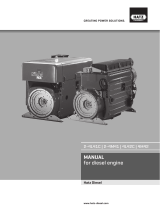
3
1 Foreword ....................................................................................................................5
2 Introduction ...............................................................................................................6
2.1 Means of representation for this operator's manual........................................... 6
2.2 Wacker Neuson representative.......................................................................... 7
2.3 Described machine types................................................................................... 7
2.4 Identification of the machine............................................................................... 8
3 Safety .........................................................................................................................9
3.1 Principle.............................................................................................................. 9
3.2 Qualification of the operating personnel........................................................... 12
3.3 Protective gear ................................................................................................. 13
3.4 Transport.......................................................................................................... 13
3.5 Operating safety............................................................................................... 14
3.6 Safety during the operation of vibratory plates................................................. 16
3.7 Safety during the operation of combustion engines......................................... 18
3.8 Safety during the operation of hydraulic machines........................................... 20
3.9 Maintenance..................................................................................................... 20
3.10 Safety and information labels........................................................................... 22
4 Scope of delivery ....................................................................................................24
5 Structure and function ...........................................................................................25
5.1 Application........................................................................................................ 25
5.2 Functional description....................................................................................... 25
6 Components and operator's controls ...................................................................27
7 Transport .................................................................................................................29
7.1 Transporting the machine................................................................................. 30
8 Use and operation ...................................................................................................31
8.1 Prior to starting the machine............................................................................. 31
8.1.1 Checks before startup .......................................................................... 31
8.2 Starting up........................................................................................................ 32
8.2.1 Starting the engine with recoil starter................................................... 32
8.2.2 Starting the engine with electronic starter ............................................ 33
8.3 Operating the machine..................................................................................... 34
8.3.1 Operating in the forward and reverse direction .................................... 34
8.3.2 Compacting on a slope......................................................................... 34
8.4 Decomissioning................................................................................................ 35
Inhalt





























